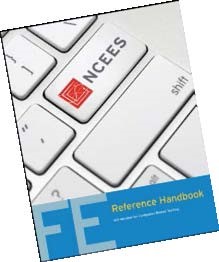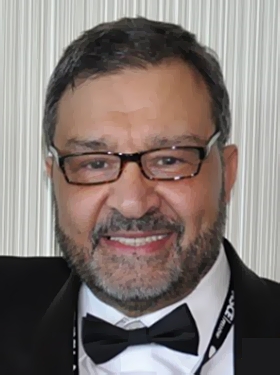Reflecting on 2016: Remembrance of Dmitri T Clemons

It has been almost three years since Ranjit Sahai, Chris Manalo and LJ Sauter of ASCE-NCS decided to have a new column in the monthly eNewsletter for students and practicing engineers. That was the beginning of “Dr. Z’s Corner” and the rest was history. As I reflect on 2016, we had some good and some sad news to report. On a personal note, I was pleased to receive another national award, this time from ASEE and the news of ASCE-Fellow. For the sad news, I will share with my readers a letter that I received from Cherod Gregory Hicks, President of ASCE Student Chapter at Morgan State University.
Remembrance of Dmitri
“My name is Cherod Hicks and over the past semester, I had the honor and privilege of serving as the President of the American Society of Civil Engineers (ASCE) at Morgan State University, located in Baltimore, MD. When I was nominated for the position, my first question was, “Who will be serving as my Vice President?” I understood then, as I understand now, without a strong support staff and executive committee, I would be unable to maintain a high standard of excellence that ASCE student chapters hold near and dear to the oldest engineering society in our nation’s history, founded in 1852. When I found out it would be Dmitri Clemons, I was excited and couldn’t wait for the fall 2016 semester to begin because I knew his work ethic was unparalleled amongst any student in the Department of Civil Engineering. We would bounce ideas off of one another and whenever I questioned my purpose in the field of civil engineering or wondered aloud if I could be successful, he always reassured me by letting me know that the only person that could stop me from achieving my goals was myself.
“Dmitri T Clemons was born in Silver Spring, MD on November 5, 1994 to Lynn Clemons. He was educated in the Montgomery County Public School system, where he graduated from Paint Branch High School in 2013. He was a member of the Varsity football team and he threw Shot Put for the track team. Dmitri was an avid reader and he loved working out. On any given day, you could find him running through campus or working out in the gym. Upon graduation, he attended Morgan State University, where he majored in Civil Engineering. In 2013 and 2014, he received a Certificate of Academic Excellence for making the Dean’s List with a 4.0 GPA. He was named Vice President of ASCE, Morgan State Chapter his Junior year and he continued in that role his senior year. He traveled to Philadelphia, PA for the Global Competitiveness Conference and he also traveled to Pittsburgh, PA and Boston, MA for the ASCE Conferences. In June of 2016, he was selected by the Congressional Black Caucus Foundation Emerging Leaders to represent Morgan State for the US-China Study Delegation. Along with being a member of ASCE, Dmitri was also an active member of the National Society of Black Engineers and the American Society of Highway Engineers.
“It is with sadness and a broken heart that Dmitri passed away on September 21, 2016 after working out. He had a near perfect GPA and his mother received his Bachelors of Science in Civil Engineering posthumously on his behalf at the December 2016 Commencement. He is as missed today as he was the moment we found out he taken his last breath. It is incredibly sad that his life ended so prematurely when we all recognized that greatness had already tapped him as the next great leader in the field of Civil Engineering. He had aspirations of pursuing his PhD after graduation and was inspirational to his fellow classmates to pursue greater goals as well. He started a GRE study group and he was instrumental in informing us that he was attending Dr. Z’s pro-bono Saturday classes at UDC (University of the District of Columbia). I, Cherod Hicks, and Phine Ulysse attended our first class with Dr. Z today and it was one of our best academic experiences to date. It would not have been made possible without Dmitri taking those first steps when he attended those sessions during the summer of 2016 and showed us how much he was learning and technical application he was taking away from Dr. Z. If he were here, he would tell us to smile, suck it up, stop making excuses, and study. Even though he is gone, he will never be forgotten because we all carry a part of him along with us every step we take, especially as we matriculate through our careers and personal lives. Dmitri T Clemons, we miss you, we honor you through our actions, but most importantly, we love you! Rest in Peace Big Homie, God’s got you now.”
Cherod Gregory Hicks,
Morgan ’16, Civil Engineering
I would like to close with uplifting news. Starting next month, we will welcome two new contributors that will be helping us: Dr Lei Wang in Geotechnical and Dr Bryan Higgs in Transportation concentrations.
Until next time,
Ahmet Zeytinci, P.E.
Dr. Z. (This email address is being protected from spambots. You need JavaScript enabled to view it.)
Dr Z’s Corner: P.S. Stands for Professional Licensed Surveyor: Let’s Talk about Surveying Licensure, Part-II

Let me start with a question: Abraham Lincoln, Henry David Thoreau, Thomas Jefferson, Daniel Boone, James Cooke and George Washington. What do these famous people have in common? They all engaged in surveying at some periods in their lives. Although the practice of surveying will not provide a sure road to the White House, many members of the profession like to think that important characteristics like problem-solving skills, paying attention to details, quick thinking, and self-reliance, helped these surveyors to become leaders. Unfortunately, many schools, including ours, dropped the Surveying course from their curriculum.
Principles and Practice of Surveying, Computer Based Test (CBT) Exam Specifications
According to NCEES, effective beginning October 1, 2016, the Principles and Practice of Surveying exam will be computer-based as well. It is a closed-book test with an electronic reference. Examinees have 7 hours to complete the exam, which contains 100 multiple-choice questions. The 7-hour time also includes a tutorial and an optional, scheduled break. The exam uses the U.S. Customary System (USCS) of units and was developed with questions that require a variety of approaches and methodologies, including design, analysis, and application. The categories with average number of questions area as follows:
1. Legal Principles (about 28 questions)
Topics: Common/case law boundary principles, Sequential and simultaneous conveyances, U.S. Public Land Survey System, Controlling elements in legal descriptions, Riparian and littoral rights, Property title issues (e.g, encumbrances, interpretation, deficiencies), Sovereign land rights (e.g., navigable waters, eminent domain), Prescriptive rights/adverse possession, Easement rights, Parol evidence.
2. Professional Survey Practices Principles (about 28 questions)
Topics: Public/private record sources, Project planning (e.g., photogrammetric, geodetic, boundary), Control datums, Encumbrances (e.g, easements, rights of way, mineral rights, subsurface rights), Control network accuracy standards, Supervision of and responsibility for field procedures, Supervision of and responsibility for the application of surveying principles and computations, Grading and site preparation, Survey maps/plats, Survey reports and Descriptions.
3. Standards and Specifications (about 13 questions)
Topics: Federal statutes, laws, rules and regulations, State/local statutes, laws, rules and regulations, Monumentation laws and ordinances, U.S. Public Land Survey System, American Land Title Association/American Congress on Surveying and Mapping (ALTA / ACSM) surveys, Geodetic control network accuracy standards, Federal Geographic Data Committee (FGDC) standards (digital mapping), US National Map Accuracy Standards (analog mapping), Federal Emergency Management Agency (FEMA)
4. Business and Professional Practices (about 21 questions)
Topics: Project planning (e.g, parameters, costs, budgeting), Contracts, Risk management (e.g, liability, safety procedures, insurance), Ethics, Communications (oral, written, graphical), Quality assurance procedures, Activities, background, and skills of related professions (e.g, engineers, lawyers, architects, planners)
5. Types of Surveys (about 18 questions)
Topics: American Land Title Association/American Congress on Surveying and Mapping (ALTA/ACSM) surveys, Control and geodetic surveys, Construction surveys (e.g, construction calculations and staking), Hydrographic surveys (e.g, elevations of submerged surfaces), Boundary surveys, Route and right-of-way surveys, Topographic surveys (e.g, scanning, photogrammetry, LiDAR, field), Condominium surveys, Subdivision surveys and Record drawing (as-built) surveys.
Brief History of Surveying
Surveying is as old as recorded civilization and nobody knows when surveying was first used. The history of land surveying dates back thousands of years and forms of land surveying have been around since ancient man in all major civilizations across the globe. As long as there has been property ownership, means of measuring the property and distinguishing one’s land from another became important and methods, techniques and regulations have been developed.
Ownership of land has and still is a very significant part of the lives of everyone in the world. For many scholars, the building of the Great Pyramid at Giza in 2700 BC is considered as one of the first examples in the history of land surveying. The Romans were the next civilization to advance on the initial land surveying techniques of the Egyptians. The early development of surveying cannot be separated from the development of astronomy or mathematics since these disciplines were closely interrelated. Geometry and surveying was particularly necessary in the Nile Valley to establish and control landmarks. In recent history, Napoleon Bonaparte was very enthusiastic about accurate land surveying. When Napoleon was trying to conquer the world, he always made sure that he had very precise maps available at the time, which were obviously very important for him.
I shall close with a final thought. During the Fundamentals of Engineering and Professional Engineering exams, timing is everything. The more time you spend on a difficult question; the more time you risk second guessing yourself. When you use process of elimination to eliminate a wrong answer, make sure you cross it out on your note pad. Don’t leave it there to confuse you if you have to choose between two remaining answer choices.
And lastly, always trust your intuition and believe in yourself. You are braver than you think and more talented than you know. Definitely you will conquer the test!
Until next time,
Ahmet Zeytinci, P.E.
Dr.Z. (This email address is being protected from spambots. You need JavaScript enabled to view it.)









